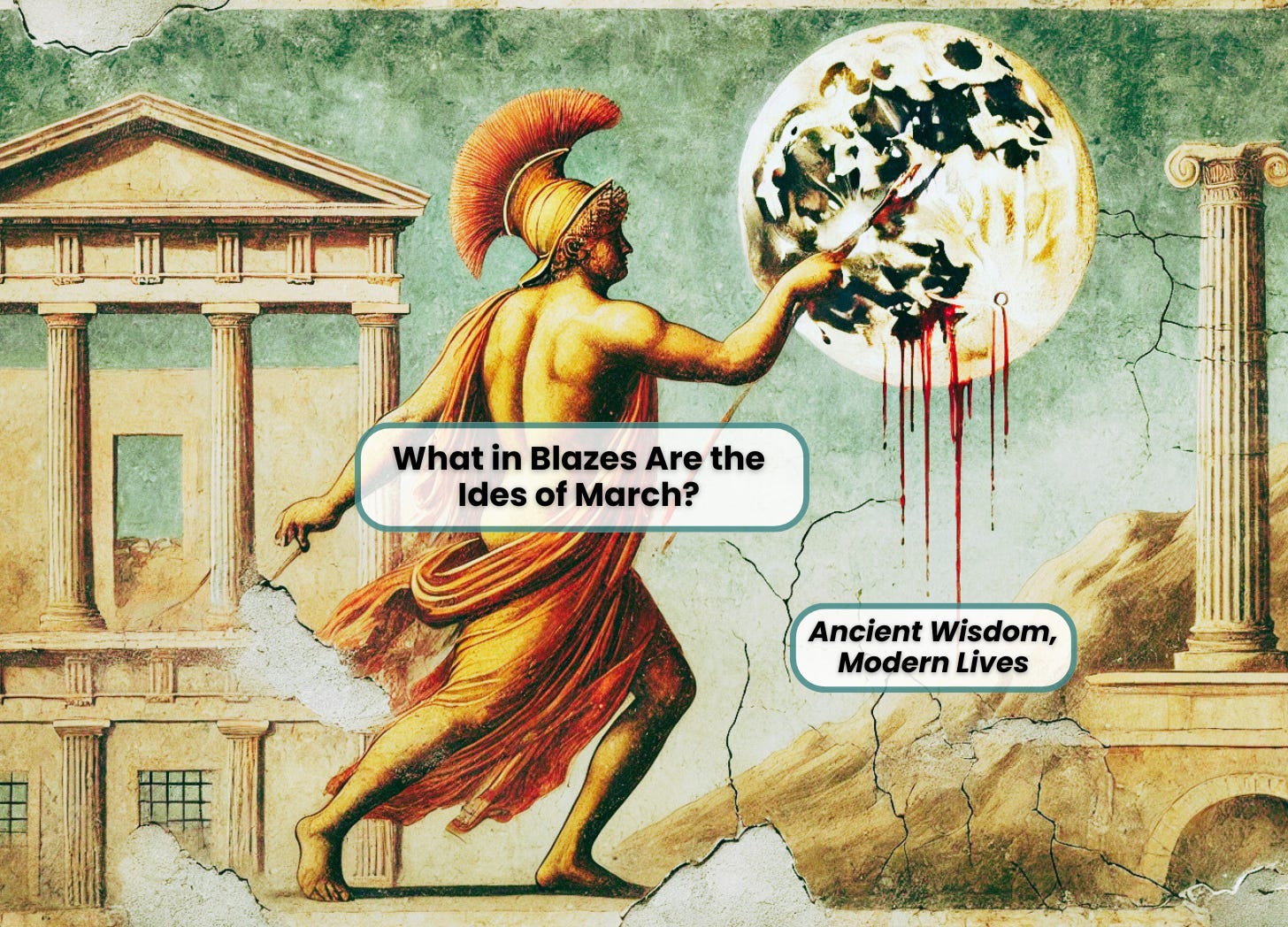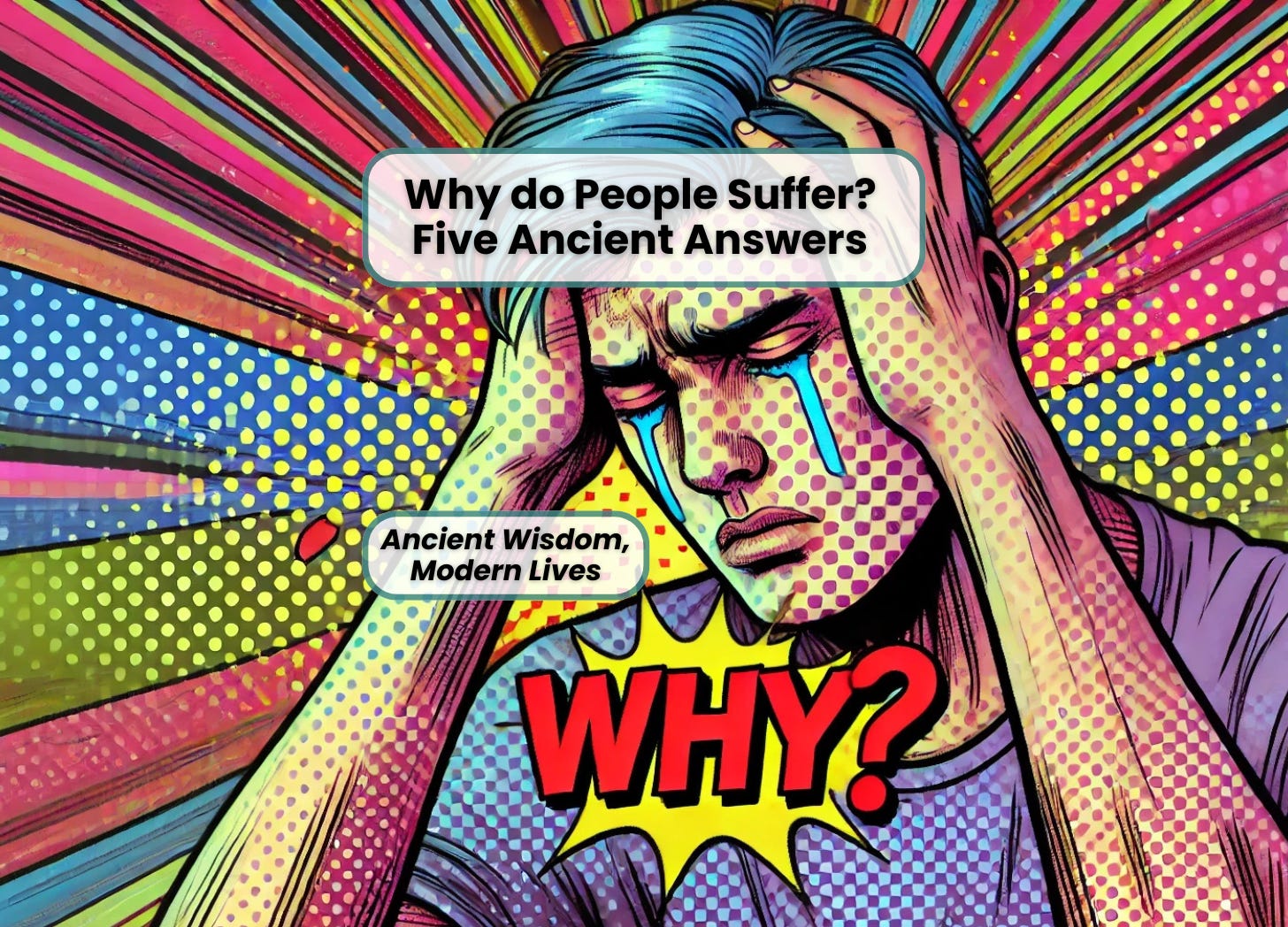Q&A: What color is the “blue” of the Bible?
From the About page comes this interesting pair of questions:
1. Is it true that there was no blue in the Bible, and that the word “blue” in our modern versions is a mistranslation? and
2. How do we know what the Hebrew names of the colors represent?
The first question was prompted by a Radiolab episode that claims that the color blue is a relatively modern invention. The episode, like most of Radiolab, is fascinating, so before you keep reading, listen to it. (Or if you’re part of the multitasking generation, listen while you read.)
The answer to the second question is that there’s only one reliable way to know exactly what a color term represents, and that’s to have a sample to compare it to — either an actual sample, or a reference to something generic like “blood” whose color we know.
So just from the text we know that adom probably means “red,” based on II Kings 3:22 (“red like blood”). Similarly, yarok is probably “green.” The fact that these words have continued to mean “red” and “green” throughout Hebrew’s history bolsters these conclusions.
I no longer actively write this blog, but you can find me at Ancient Wisdom, Modern Lives
Subscribe Now I'd love to see you there!As the Radiolab episode points out, languages tend to follow patterns regarding color words, and one pattern in particular is that words for the primary colors enter a language before fancier colors. For example, if a language has a word for “pink,” it also has one for “red,” but not vice versa.
This means that the next words we should look for are “yellow” and “blue.” (The primary colors are actually pretty complicated, coming in two varieties: Red/Green/Blue and Red/Blue/Yellow. Look up “additive” and “subtractive” if you’re curious.)
We have a word tsahov in the Bible, and while there’s no textual evidence to tell us what it is, it always seems to have meant “yellow.” So that’s a goog guess.
And that leaves “blue.”
On the one hand, there’s a post-Biblical Hebrew word kachol that means “blue.” If it meant “blue” in the Bible, too, we have four candidates for primary colors that all look the same structurally (this is important in Hebrew), with an /a/ vowel then an /o/ vowel separating three consonants, though it’s a bit hard to see in English because the first consonant in adom is the Hebrew letter aleph (for which we don’t use a consonant in English) and both tzahov and kachol have consonants for which we use two letters in English.
So far it looks like we’ve understood the primary colors, and, indeed “blue” doesn’t appear in the Bible.
What does appear, though, is t’chelet. Tradition puts this as some shade of blue, and if we’re right that kachol is “blue,” t’chelet must be something else, probably a more specific blueish color. Furthermore, t’chelet often appears in lists with other seemingly non-primary colors like argaman and shani, and even zahav (which we know is “gold” and may also be “golden”).
All of this evidence points toward t’chelet meaning some blueish shade that isn’t blue. But because we don’t have any actual samples (the oldest sample of anything blueish is less than 2,000 year old, so it doesn’t help), we can’t narrow it down any further.
This doesn’t mean people haven’t tried, though, because it’s a matter of some religious importance. But I’m not convinced by any of the theories that claim to have determined the exact shade.
So it looks like there’s no pure blue in the text of the Bible, but there are other shades. I don’t think this means that they didn’t have blue back then, though. I suspect it just means they didn’t write about it.
Bible Bible translation blue color words kachol primary colors t'chelet tekhelet translation תכלת






25 Responses
The primary color thing is not anthropologically sound. http://en.wikipedia.org/wiki/Color_terms#Basic_color_terms contains a description of the common patterns for color terms in languages. If you can’t find a term for blue, it’s likely that it’s the same as green (as is the case in modern Japanese) or black.
Modern Japanese “Blue” is “Ao[i]”, while modern Japanese “Green” is “Midori”. If you’re referring to one of those two colors not technically being an adjective, then you would be correct. But yes, Japanese has both these colors.
They do pretty much know what color t’chelet is now. A sample was discovered at Masada and chemically analyzed:
http://www.nytimes.com/2011/02/28/world/middleeast/28blue.html?_r=1
Some interesting videos are also on the tekhelet.com website…
http://www.tekhelet.com/mystery.htm
Thanks, Lois.
I provide that link in my main text, but I discount it, for two reasons. First, the fabric patch, from the first decades of the first millennium AD, comes too late to help directly with the Old Testament. Secondly, we don’t know for sure that this is t’chelet. It’s a fascinating find, because it shows us what coloring technology was in use at the time, but I don’t think it helps much with color terms from hundreds of years earlier.
[…] the problem with the word “blue” in the Bible. It seems to be blue, but it’s not clear what kind of blue that might […]
Sorry I didn’t see your link, Joel.
Every time t’chelet is used in the text, it is associated with clothing. It’s never just used as a word to describe the color of the sky or the sea. My assumption is that it’s not an abstract word that means a shade of “blue,” but a particular dye color.
Is there a reason to assume that the dye color would be different in the Second Temple Period than in earlier history? Given that it would have been needed for priestly garments, it seems like the knowledge would have been handed down over the centuries.
I agree that it didn’t mean “just any shade of blue,” but, rather, referred to a specific shade of blue. My point is that we don’t know which shade.
Even if it was used for the priestly garments, I tend to think that it would have changed over 500 years, though I can also see how it could have been the color produced by a particular animal, in which case it would have been easier to keep constant. But don’t forget, we don’t know if the sample from Masada was t’chelet or not.
I am not a Bible expert by any means. I have a curious question. If the other colors are used in the Bible, then why do you assume that blue was around, just not written down? It’s such a long work, you’d think blue would have made it in at least once.
Not necessarily. “Blue” didn’t come up very often in the ancient world, because the color is so rare in nature. The Radiolab episode discusses exactly this issue.
Isn’t the sky blue? And dont bodies of water appear blue? So it’s not really that rare in nature. More likely is that we didn’t develop our ability to observe the color until some time later. There is evidence to support this view in other ancient languages too.
I seem to recall there’s an excellent and accessible (to the non-specialist) in Guy Deutscher’s Through the Language Glass about how language for colour tends to develop.
I was under the impression that blue is often referenced in later Exodus chapters in the description of threads and cloth for the tabernacle. Of course, that was NRSV English, but for a “literal” translation I would expect the NRSV to not simply throw in the color blue if it wasn’t really mentioned.
http://www.biblebasics.co.uk/colours/col5.htm
Were there any Hebrew references to lapis lazuli in ancient writing?
Probably, though — as with most technical terms — it’s hard to be certain.
[…] Part 3, “Heart and Soul” Adultery in Matthew 5:32 Who Says Homosexuality is a Sin? Q&A: What color is the “blue” of the Bible? What’s the difference between an eagle and a vulture? Disaster, Unloved, and Unwanted: […]
[…] Other scholars disagree with the linguistic analysis summarized on Radiolab. Dr. Joel Hoffman, theological linguist, agrees that ancient Hebrew probably didn’t have a word which we’d identify as “Blue”, but he is dismissive of the idea that ancient people had no concept of blue. […]
Blue, purple & scarlet thread is mentioned repeatedly in Exodus, Leviticus & Numbers and then in 2 Chronicles in the design of the Tabernacle, the covering of the ark & in the priestly garments etc. Scarlet (shani) comes from coccus ilicis worm; while the blue (te-khe-let) and purple (or violet; argaman) come from the murex snail – the northern varieties apparently giving a bluer shade (the Phoenicians’ royal blue) than the southern ones. Te-khe-let is used 49 times in the Old Testament – and it still refers to the colour blue in the fringes of Jewish prayer shawls. Jeremiah, Ezekiel and Esther all refer to blue, along with purple, in the garments of the rich.
Int Exodus 24:10 “There they saw the God of Israel. Under his feet there seemed to be a surface of brilliant blue lapis lazuli, as clear as the sky itself..” in which sappir – either sapphire or lapis lazuli (both blue gems) – is compared to the bright sky. Sappir occurs 11 times in the Bible Ex 24:10; 28:18; 39:11; Job 28:6,16; Song 5:14; Isa 54:11; Ezek 1:26; 10:1; 28:13, Rev 21:20 – as a precious gem, an analogy for a bright appearance or the appearance of the throne of God.
So with respect to question 1 – there is blue in the Bible (both as a reference to the colour produced by a particular dye and a precious stone which is equated to the sky or God’s throne) – even if the Hebrew word used now means “light blue” and is not the modern word used for blue.
And with respect to question 2 – it is of course difficult to know for sure – except that there is a history of usage of these terms (biblical and extra-biblical) that relates to archaelogical discoveries. (For instance correlation of use in the Pentateuch and say Ezekiel and Jeremiah; the known existence of these two dyes or the murex in the ancient world – that are still existent today etc)
And this archaeological find http://www.dailymail.co.uk/sciencetech/article-2532623/Sacred-blue-snail-dye-seen-twice-Jesus-alive-discovered-Israeli-cloth.html
Certainly the translations use the English word “blue,” but we don’t know of those translations are accurate.
The translators don’t use “blue” on a whim – and it’s not just “English” translations that do it. Sure, we can’t be 100% sure – but that doesn’t mean that there isn’t a strong case for te-khe-let being blue. And certainly speculation on the basis that Homer’s use of “wine-dark” for the sea as an extrapolation that there was not word for or mention of blue in Hebrew OT and therefore that the ancients didn’t recognise blue seems a extremely tenuous to me.
Some points to consider:
1) tekhelet is mentioned with 2 other dyes commonly identified as red and purple (or a reddish purple) – so having another purple dye would seem superfluous (though possible);
2) There was a continuous tradition of using tekhelet in the prayer fringes and a knowledge of the source of that dye up until 7th CE after which the knowledge was lost.
3) there are several reference in the Talmud – including from 2nd century – that tekhelet was a similar colour to the sky and the ocean
eg” But Rabbi Herzog, like the overwhelming majority of Jewish scholars since antiquity, had firmly believed that tekhelet was sky-blue, with no purple tinges. Maimonides (1135-1204) had declared unequivocally that tekhelet was “the color of the sky opposite the sun when there is a clear sky” (Mishneh Torah, Laws of Tzitzit 2:1). Nearly a thousand years earlier, the second-century scholar Rabbi Meir declared, “Tekhelet resembles the sea, and the sea resembles the heavens, and the heavens resemble God’s holy throne” (Midrash Sifre, Shelach).” http://www.hope-of-israel.org/tekhelet.html & http://tekhelet.com/tekhelet/introduction-to-tekhelet/
4) In Bablyonian Talmud – there is a story of merchants successfully substituting the cheaper indigo dye for Tekhelet suggesting that Tekhelet is blue or sky-blue. http://www.hope-of-israel.org/tekhelet.html
5) Wayne Horowitz, an Assyriologist states that when Tekhelet is translated into the Assyrian, the same cuniform symbol for “blue wool’ (derived from the word for lapis lazuli & applied to the sky) is used http://www.hope-of-israel.org/tekhelet.html & http://www.biblicalarchaeology.org/daily/ancient-cultures/what-color-was-tekhelet/
6) Tekhelet (like the purple) is associated with royal clothing & according to the Talmud tekhelet is produced by a marine creature known as the ḥillazon. The Murex snail is an ancient source of both purple and blue dyes which were very expensive and often reserved for royalty. The 2nd archaeological find of Jewish fabric locally made as well as vast amounts of murex shells supports the Talmudic evidence.
What about turquoise ?
Look at the end of parsha vayakel.
Just because a modern English translation says “turquoise” doesn’t mean that that was the original intention of the Hebrew.
I don’t understand how any of this is true since in the old testament (the True Torah /bible) it clearly states that Joseph collected food for the 7 years of famine, like the “blue” of the sea… Really meaning that he collected more produce than they could count. So it’s really a metaphor for the huge amount of produce that was collected.
Exodus 24:10 mentions a pavement made of sapphire clear as the sky. Sounds like blue to me.
Exodus 26:1. What about the “blue” here?
it’s purplish-blue, identical in chemical composition to Indigo (the plant), which one was specifically enjoined not to use. Also called “hyacinth” (also purplish-blue). Turquoise is a mistranslation. But you’re absolutely right that it’s not plain old “blue”.